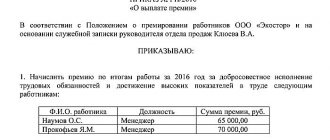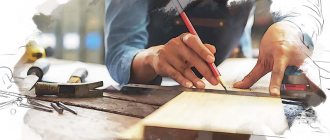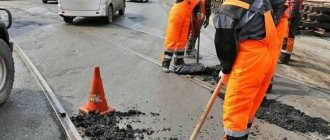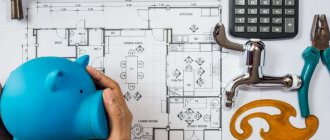— Galina Aleksandrovna, do you pay for major repairs? — I ask a question to my socially aggressive and active housemate, holding my son’s palm in my right hand and a bag of garbage in my left.
- No, I’m not crying and I’m not going to. And all of us in the veterans committee were forbidden to do this.
To be honest, I was taken aback. Because my neighbor is from the category of those people who unconditionally support the policies of our state in all directions, knows all the officials by sight, voice, and just about anything, immediately calls a deputy or the district administration. And suddenly a demonstration of disobedience.
From the rush of feelings, I immediately put the bag of garbage on the ground and set out to find out the motives and arguments. Our local community immediately woke up: “How can we not pay, there will be a debt, the electricity may be turned off, or, worse, the water.”
“They won’t turn it off, they don’t have the right,” my neighbor continued categorically. — This capital repair fund is a lie. They collect money from us, and the repairs will be done in 30 years, when I’m already dead!
My son, who urgently needed to visit the playground and was not at all interested in mercantile everyday issues, brought me out of the epicenter of an interesting dispute. I grabbed a bag of trash and walked away, my back catching the growing civil unrest.
The discussion continued at work when I asked my colleagues the same question. It turned out that for every law-abiding payer in our organization, there are at least three people who ignore receipts. Moreover, there were those who began to regularly transfer money for major repairs, but then stopped doing this. “I was very bothered by the story with the purchase of the Toyota Prado. What kind of artist should I pay for the comfort of an official?” - Vadim told me. “When I came to pay a receipt to Sberbank, they charged me a transfer fee. “I don’t agree,” Natalya continued. “The first time I received a receipt, then there was nothing for 3 months, and recently they started sending me again, but with a debt. I’m not going to pay for their mistakes,” Alexey contributed.
Since this all started.
A little history of the issue
In 2012, the state admitted that it was no longer able to bear the burden of major housing repairs. If before this there were various schemes of double or triple co-financing, when the lion's share of expenses fell on the federal budget, then with the adoption of amendments to the Housing Code, the honorable right to repair their houses was assigned to their residents. After this, the regions began to adopt regional programs. Some, like the Samara region, started in the forefront in 2014, but the majority of regions switched to a new system of financing major repairs this year. For example, Moscow announced the start of the program on July 1, 2015.
On June 21, 2013, the Samara Provincial Duma adopted Law No. 60 “On the system of major repairs of common property in apartment buildings located in the Samara region,” which outlined all the rules of the game between a person and the regional operator of the program. The law is very tricky. It strongly resembles serfdom along with corvée and quitrent. There is even a “St. George’s Day” there.
Regional regulation of the overhaul of apartment buildings
To implement the requirements of housing legislation, the highest executive body of government of a constituent entity of the Russian Federation approves a regional program for major repairs in apartment buildings.
Program Goals:
- organization of major repairs;
- control over timely completion of work;
- planning the provision of state and municipal support through the allocation of budget funds.
The program installs:
- timing of major repairs;
- a list of all apartment buildings on the territory of the subject;
- a list of repairs and their approximate cost.
To achieve the goals of the regional program, accurately calculate deadlines, as well as to calculate the volume of state support, constituent entities of the Russian Federation are required to approve short-term implementation plans for a period of 3 years (clause 7 of Article 168 of the RF Housing Code).
The plan is necessary to update and adjust capital repair work, based on the amount of funds in the account of the regional operator.
The regional program and short-term plans for its implementation are subject to posting on the website of the government authority of the subject. You can monitor the progress of implementation, as well as find out the start date of major renovations of your home on the Housing and Communal Services Reform website.
What's in the law
If you are content with my free translation of a government legal document, then, in essence, it says that the main and sacred duty of every citizen living in an apartment building (2 or more apartments) is to pay a monthly amount calculated based on the cost per square meter. For Khrushchev, Stalin and other buildings below 5 floors, the amount is 5 rubles 7 kopecks, for high-rise buildings - 5 rubles 84 kopecks. Residents of unsafe houses or those houses subject to demolition are exempt from paying contributions.
It is worth noting that in the Samara region the amount of established payments is lower than in many other regions. The price range varies from 1 ruble to 15 rubles per m2. However, when asked how the amount of contributions was calculated, none of the officials gave a clear answer.
An objective assessment of the condition of the housing stock was not carried out. In order to inspect the 18,632 houses identified in the capital repair program, 10 teams of specialists would need approximately 5 years.
They said that before introducing a fee for major repairs in the region, the Capital Repair Fund conducted a study of how much money people were willing to pay for this service. And according to the survey results, an amount of up to 6 rubles turned out to be the most comfortable. The formula for calculating the fee for major repairs was to be based on the number of houses, an assessment of their condition and the average cost of the main types of work. It is quite obvious that an objective assessment of the condition of the housing stock was not carried out. In order to inspect the 18,632 houses identified in the capital repair program, 10 teams of specialists would need approximately 5 years. Therefore, if you open the register of houses with the specified types of work on the website of the Capital Repair Fund, you will understand everything yourself.
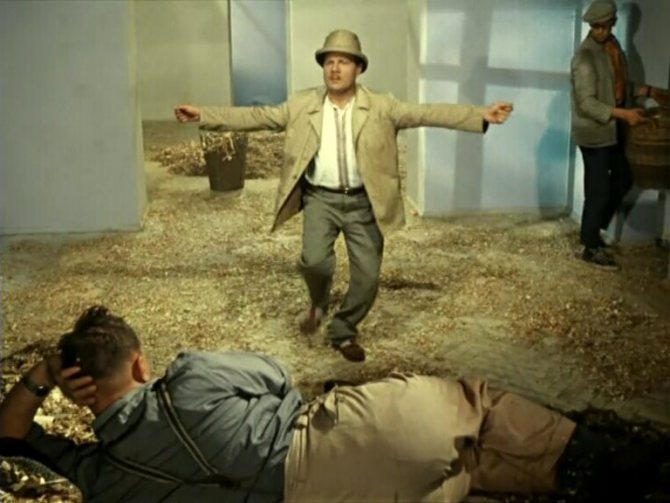
"Common fund" or special account?
The law gave residents the right to choose the method of saving money. Either in the account of a regional operator (i.e., in our case, the Capital Repair Fund), or in a special account with him, when the money of an individual house is accumulated separately from the rest, or in a special account in a commercial bank.
In the Samara region, the “common fund” format turned out to be overwhelming. According to experts, in the region approximately 1% of houses have chosen the services of a special account. And it seems to me that there are explanations for this. People simply did not have time to deal with the law. Explanatory work with the population was not carried out. I wouldn't like to think that this was done deliberately. But if you remember the campaign to transfer houses to HOAs, carried out in 2005-2007, then every iron in every apartment was shouting about the advantages of HOAs.
In fact, the option with a special bank account seems to be the most logical and fair. The Deputy Minister of Construction and Housing and Communal Services of the Russian Federation said the same thing at a recent congress dedicated to the first results of the capital repair reform, Andrei Chibis . In particular, he said that at the moment only 10% of households in the entire country have taken advantage of the right to special accounts, but by 2020 this figure should increase to 50%. However, in the law of the Samara region, the possibility of switching between different forms of managing funds for major repairs is clearly not in favor of the resident.
For example, in order to transfer from the “common fund” to a special account, you have to wait 2 years and meet a number of impossible conditions, one of which is that not a single resident of the house has a debt to the capital repair fund. But if the residents of the house get so tired of managing their money and request service from the fund, they will be graciously accepted within one month. By the way, the same Andrei Chibis explained to the editorial board of the DG that amendments to federal legislation will be adopted in the fall, which will remove the barriers that are hindering the transition to the formation of special accounts.
Who pays contributions to the fund
The obligation to pay contributions for major repairs of apartment buildings lies with the owners. That is, persons living in apartments on the basis of social tenancy agreements, specialized housing stock, service apartments, under rental conditions are not payers of contributions.
If, when purchasing an apartment, the new owner did not check the debt on contributions for major repairs by the previous owner, he will be obliged to pay off the debts himself, including penalties. Therefore, when concluding a purchase and sale agreement, it is necessary to require documents confirming the absence of debt.
Donations
The law of the Samara region determined the main operator for the implementation of the program - the Non-Profit Partnership “Capital Repair Fund”. He is the main fundraiser and the main manager of funds.
No one controls the activities of the fund. This is the worst thing. Residents who contribute funds to the fund must fully rely on the honesty and integrity of the officials who spend them. But big money so rarely coexists with crystal honesty...
The funds that we pay according to the receipt, as soon as they reach the Capital Repair Fund account, turn into its property and are considered - ATTENTION! - donations.
The funds that we pay according to the receipt, as soon as they reach the Capital Repair Fund account, turn into its property and are considered - ATTENTION! - donations. After all, according to the laws of the Russian Federation, a foundation is an NPO, I quote: “... a non-profit organization that does not have a membership, established by citizens and (or) legal entities on the basis of voluntary property contributions, pursuing social, charitable, cultural, educational or other socially useful goals. The property transferred to the Foundation by its founders (founder) is the property of the Foundation. The founders are not liable for the obligations of the Fund they created, and the Fund is not liable for the obligations of its founders. The foundation uses the property for the purposes specified in its charter."
Lawyers rightly believe that the owners of residential buildings bear the costs of their maintenance and repair, and also pay for utilities in accordance with agreements concluded with persons engaged in the relevant types of activities. The formula “in accordance with contracts” indicates the impossibility of any other option for incurring costs for maintaining and repairing the house and paying utility bills. But not a single person I know has entered into an agreement with the Capital Repair Fund. In some regions, in order to get around this annoying oversight, they did this: on the back of the receipt, in beaded font, they printed the text of the agreement, which stated that the agreement was automatically concluded if the person paid the first receipt. In our case, even this was not done. We owe it, but no one owes us for it.
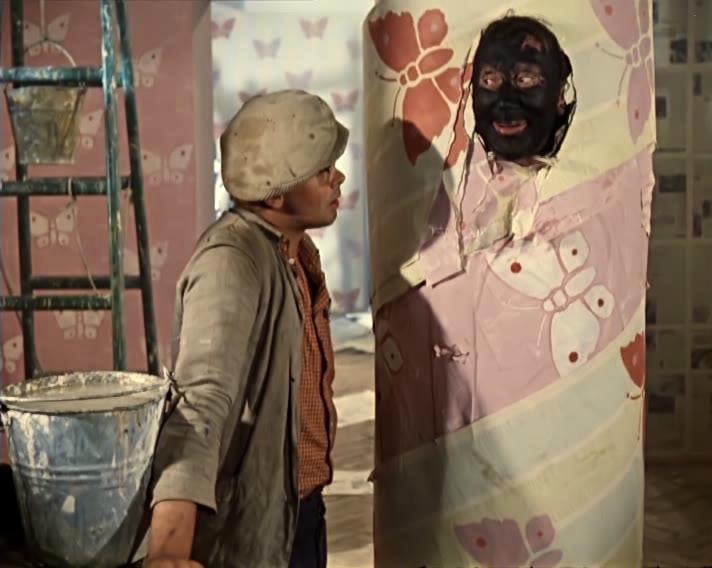
Sources of formation of the Fund
The fund is accumulated from monthly contributions paid by residents. At their meeting, it may be decided that funds received from the rental of common property, technical premises, advertising places, etc. will also be added to it.
The Fund additionally includes:
- penalties paid for late contributions;
- interest accrued by the bank for the temporary use of funds from the Fund’s account;
- income from deposits, if the Fund’s funds were on them;
- loans or loans that were issued for major repairs.
Important!
Funds for major repairs can be accumulated not only in the Fund’s account. The meeting of premises owners may approve the creation of a separate account for the house, where they will transfer contributions.
Unforgivable fall
The law of the Samara region determined that within 30 years all houses specified in the program will undergo major repairs. Moreover, the types of capital repairs are determined on the basis of long-term and short-term plans, which are formed jointly with municipalities. In particular, the short-term plan for the implementation of this regional program for 2014 was approved by order of the Ministry of Energy and Housing and Communal Services of the Samara Region No. 304 dated December 30, 2014.
My house is included in the overhaul program for 2014-2015. I personally found it in the register published on the foundation’s website. According to this source, utilities in the house are to be repaired and the basement needs to be renovated. I don’t want to sound like a bore, but there have been no repairs and are not planned.
According to the Ministry of Energy and Housing and Communal Services of the Samara Region, as of July 2015, “work has been completed and accepted by the owners of premises in 467 apartment buildings, including:
— engineering systems were repaired in 117 houses;
— roof repairs in 317 houses;
— in 12 houses – repair or replacement of elevator equipment;
- in 21 houses - repair and (or) insulation of the facade.”
However, at the launch stage of the program in 2014, the Capital Repair Fund declared that work on 862 apartment buildings would be completed by December 31, 2014! Thus, simple arithmetic shows that the stated rates are very different from the real ones.
Commenting on the first results of the overhaul program, Governor of the Samara Region Nikolai Merkushkin said: “The implementation of the program depends on the degree of trust of people and the authorities.” And these are golden words, because if the program had picked up the right pace from the very beginning, if people had seen the results, then the question: “Pay or not pay for major repairs” would not have arisen.
One of the authors of the amendments to the Housing Code, State Duma deputy Pavel Kachkaev, criticizing the implementation of the capital repair program, cited the following figures: “From 2008 to 2013, we gained a good pace in major housing repairs - 70 million square meters per year. And at the end of 2014, this figure was 34 million square meters - that is, half as much! This is an unforgivable fall."
Has the program failed? In part, one can say so. The wording would be more precise: it did not live up to expectations. And the situation with the closedness of the regional operator of the Capital Repair Fund program adds negativity to the overall situation.
Capital Improvement Fund - what is it?
March 26, 2017
Contents
:
- Home capital repair fund: what we pay for
- Website of the Fund for Capital Repairs of Apartment Buildings
- Fund for capital repairs of apartment buildings in the region and legislation
- Tips for homeowners
Since 2013, in all cities of the country, home owners began to receive receipts for payment for major home repairs.
Such circumstances caused indignation among many owners, since there were no explanations on this issue. The article addresses questions about the list of work that should be carried out and where to apply.
Home capital repair fund: what we pay for
In 2012, the State Duma submitted for discussion a bill on creating a fund for capital repairs of residential buildings. The project was supported by almost all deputies, believing that this would help homeowners repair their houses as soon as possible.
Payment amount per 1 sq.m. varies from 6 rub. up to 20 rubles, depending on the region of location and age of the house. In general, this turns out to be a “good” additional load on the wallet.
List of repairs that must be paid from the fund:

- roof repair or replacement;
- insulation and painting of the facade of the house;
- elevator replacement;
- basement renovation;
- replacement of internal communications;
- installation of communal meters;
- replacement of windows in the entrance;
- installation of new railings;
- plastering walls and ceilings;
- replacement or repair of stairs, etc.
Homeowners are offered two options for saving money for repairs:
- to the general account;
- to a special account.
If money is transferred to the “common pot,” then the house is put on a waiting list. The wait can take many years, as the old houses are renovated first, and then the rest. The problem is that most citizens do not want to pay for this service, and the fund does not have enough money for repairs.
Particularly active residents of the house wrote a statement that they wanted to transfer money to a special account at home. Many citizens adhere to this position, since they save money to repair their own home, and when there is a need, the savings are spent on repair needs. The system is transparent and simple.
To create a special account, you must write a collective application addressed to the director of the Capital Repair Fund. All residents of the house sign it, and only after that an individual account is opened.
Website of the Fund for Capital Repairs of Apartment Buildings
Each region has its own website for the Capital Repair Fund.
Mandatory items that must be reflected on the page:

- information about the Foundation and its public council;
- news and events in the field of financial reform;
- documents and reports of the Foundation on the implementation of programs;
- information for owners (payment, personal account, instructions, etc.);
- Foundation contacts.
The Capital Repair Fund is obliged to:
- post information about ongoing repairs;
- post photo reports of the work done;
- keep a schedule of houses in the public domain;
- provide complete information about the costs of repairs performed, etc.
For all existing questions, you can call the contact numbers. A Foundation employee is obliged to answer all questions and provide explanatory information.
Fund for capital repairs of apartment buildings in the region and legislation
According to the legislation of the Russian Federation, all apartment owners are required to pay fees.
The exceptions are categories of citizens who live:
- in emergency or dilapidated housing;
- in a council house.
Citizens who are officially recognized as low-income can receive benefits to pay for repairs.
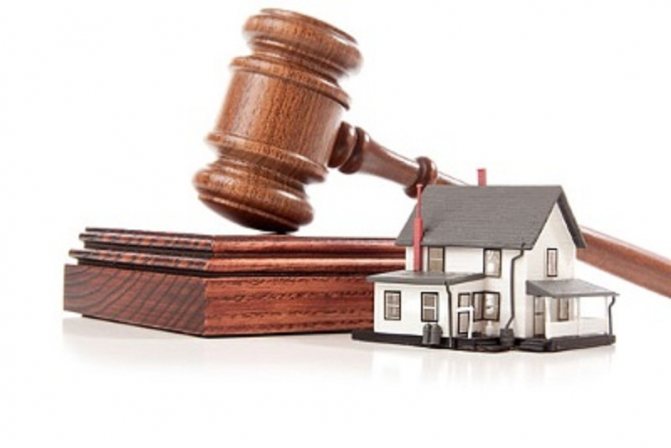
If your home requires urgent repairs, and the program specifies long waiting periods, then you can file a claim with the court to invalidate the schedule and revise the deadline.
The spending of funds on home repairs is monitored by government agencies, such as:
- Accounts Chamber;
- Federal Antimonopoly Service;
- State Housing Inspectorate;
- Prosecutor's office.
Thus, the implementation of the program is monitored and the fact of inflated prices for building materials is excluded.
Tips for homeowners
- When purchasing an apartment, be sure to request a certificate of debt for major repairs.
- If the repair work was performed poorly, contact the state housing inspection.
- After completion of repairs, residents have the right to demand a full report on the expenditure of funds for repairs.
There are no fish to be seen in muddy water
In mid-June 2015, I wrote a request addressed to Andrey Chibisov , General Director of the Non-Profit Organization “Capital Repair Fund” of the Samara Region, where I formulated 6 questions: about the pace of repairs, about the collection of funds, and about the efficiency of their use. This is a completely correct journalistic request, to which the authorities should respond as quickly as possible within a week. But I still didn’t receive an answer either after a week, or after a month, or after a month and a half. Press secretary Anastasia Tereshchenkova , whose sacred duties, I believe, should include disclosing the requested information, did everything to hide it.
In search of any information at all, I met with Samara City Duma deputy Maxim Fedorov , who for some time worked as deputy general director of the Overhaul Fund and was fired from there twice. When asked directly why the fund was so closed, Maxim Fedorov, without hesitation, replied: “There is something to hide.” And after that he told me a long and complicated story about the installation of metering devices in different cities of the Samara region, where the fund acted as a customer, as a result of which a criminal case has now been opened for financial fraud.
Nikolai Merkushkin said that the Capital Repair Fund was checked 91 times over the past six months! This was said in a tone that, they say, they interfere with work, slow down activities. But you can look at this from another angle: why does a young organization have so many reasons for inspections? Who and why is dissatisfied with the activities of the fund?
I would not like to retell other stories where the employees and generals of the fund look impartial; let this remain on the conscience of Maxim Fedorov, along with his right to contact law enforcement agencies. But there is one more fact that was made public by the governor himself. Nikolai Merkushkin said that the Capital Repair Fund was checked 91 times over the past six months! This was said in a tone that, they say, they interfere with work, slow down activities. But you can look at this from another angle: why does a young organization have so many reasons for inspections? Who and why is dissatisfied with the activities of the fund?

To pay or not to pay
In the Samara region, according to Governor Nikolai Merkushkin, the collection of funds for major repairs has reached 65%, and by the end of the year this figure should reach 80%. These are the optimistic forecasts that were presented at the recent congress of the PCF. Nikolai Ivanovich has opponents who claim that the real figures are much lower and amount, like the national average, to 30-35%. We cannot check because the information is closed. It's up to you to decide who to take at his word.
Federal legislation, as well as regional legislation, obliges us to pay contributions for major repairs. The law even stipulates that in the event of debt, the fund has the right to charge penalties and fines for late payments. I struggled for a long time, grinding out the legal intricacies of the new law, as well as its interaction with other regulations. One kind lawyer told me the following: “I am paying for major repairs. Because if the state intends to collect money from the population, then it will not abolish this right, but will seek strict financial discipline. There will be penalties, enforcement proceedings, bans on traveling abroad, and other “delights”. Therefore, I take the position of “out of harm’s way.”
Another lawyer I know, after our long conversations, wrote an application to the Capital Repair Fund with a demand to exclude him from the register of payers of contributions for major repairs, having found more than a dozen holes in the current legislation. There is no answer yet, but it is waiting for him, the month is not over yet. Here is the text of his statement.

Everyone makes their own decision whether to pay receipts or not. In principle, the very idea of overhaul is very reminiscent of the Soviet mutual aid funds, when those who have problems can receive additional funds. And this system worked well on trust. But trust exists only where everything is transparent and understandable. Alas, this is not about us.
There is one more important point that I would like to mention separately. The overhaul program provides, excuse the tautology, overhaul of 5 types of work: replacement of roofing, elevators, engineering systems, repair of facades and basements. But it DOES NOT PROVIDE for the rehabilitation of houses. That is, Khrushchev will still be Khrushchev in 30 years, only with a new roof. There is no talk of improving the quality of housing through partial reconstruction of houses, as is done, for example, in Moscow! We will preserve until the last what we have.
Text: Anastasia Knor
Where are funds from the accounts used?
The capital repair fund accumulated in the account can be spent on repairs:
- engineering systems inside the house - electricity supply, gas supply, water supply, drainage;
- elevator cabins, shafts;
- roofing structure;
- facade works;
- foundation;
- basements;
- smoke removal systems, fire automatics;
- drainage elements;
- replacement of window systems;
- repayment of loans received and used to pay for services and major repairs.
Important!
Funds from the Fund can be used, after approval at the general meeting, to develop and conduct an examination of existing design documentation, as well as to pay for designer’s supervision of repair work. This applies to houses in Moscow that are cultural heritage sites.


